FROM THE OCTOBER, 2003 ISSUE OF THE ROBB REPORT COLLECTION
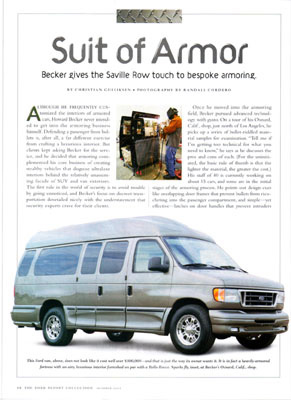
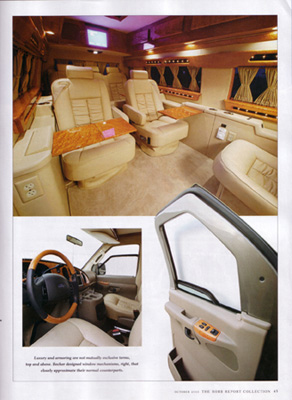
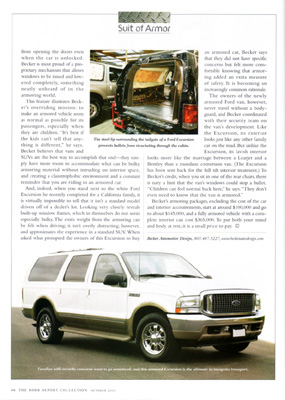

Although he frequently customized the interiors of armored cars, Howard Becker never intended to get into the armoring business himself. Defending a passenger from bullets is, after all, a far different exercise from crafting a luxurious interior. But clients kept asking Becker for the service, and he decided that armoring complemented his core business of creating stealthy vehicles that disguise ultraluxe interiors behind the relatively unassuming facade of SUV and van exteriors. The first rule in the world of security is to avoid trouble by going unnoticed, and Becker’s focus on discreet transportation dovetailed nicely with the understatement that security experts crave for their clients.
Once he moved into the armoring field, Becker pursued advanced technology with gusto. On a tour of his Oxnard, Calif., shop, just north of Los Angeles, he picks up a series of bullet riddled material samples for examination. “Tell me if I’m getting too technical for what you need to know,” he says as he discusses the pros and cons of each. (For the uninitiated, the basic rule of thumb is that the lighter the material, the greater the cost.) His staff of 40 is currently working on about 15 cars, and some are in the initial stages of the armoring process. He points out design cues like overlapping door frames that prevent bullets from ricocheting into the passenger compartment, and simple-yet effective-latches on door handles that prevent intruders from opening the doors even when the car is unlocked. Becker is most proud of a proprietary mechanism that allows windows to be raised and lowered completely, something nearly unheard of in the armoring world.

This feature illustrates Becker’s overriding mission: to make an armored vehicle seem as normal as possible for its passengers, especially when they are children. “It’s best if the kids can’t tell that anything is different,” he says. Becker believes that vans and SUVs are the best way to accomplish that end-they simply have more room to accommodate what can be bulky armoring material without intruding on interior space, and creating a claustrophobic environment and a constant reminder that you are riding in an armored car.
And, indeed, when you stand next to the white Ford Excursion he recently completed for a California family, it is virtually impossible to tell that it isn’t a standard model driven off a dealer’s lot. Looking very closely reveals built-up window frames, which in themselves do not seem especially bulky. The extra weight from the armoring can be felt when driving; it isn’t overly distracting, however, and approximates the experience in a standard SUV. When asked what prompted the owners of this Excursion to buy an armored car, Becker says they did not have specific concerns but felt more comfortable knowing that armoring added an extra measure of safety. It is becoming an increasingly common rationale.

The owners of the newly armored Ford van, however, never travel without a bodyguard, and Becker coordinated with their security team on the van’s development. Like the Excursion, its exterior looks just like any other family car on the road. But unlike the Excursion, its lavish interior looks more like the marriage between a Learjet and a Bentley than a mundane conversion van. (The Excursion has been send back for the full tilt interior treatment.) To Becker’s credit, when you sit in one of the rear chairs, there is nary a hint that the van’s windows could stop a bullet. “Children can feel normal back here,” he says. “They don’t even need to know that the van is armored.”
Becker’s armoring packages, excluding the cost of the car and interior accoutrements, start at around $100,000 and go up to about $145,000, and a fully armored vehicle with a complete interior can cost $365,000. To put both your mind and body at rest, it’s a small price to pay.

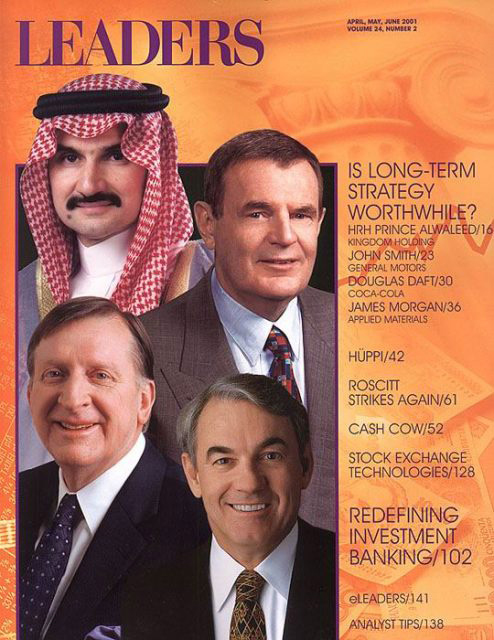
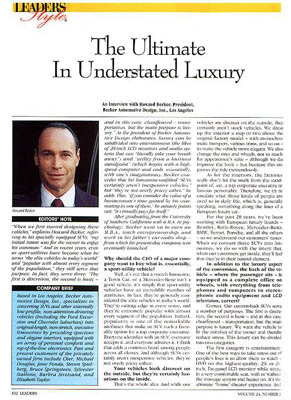
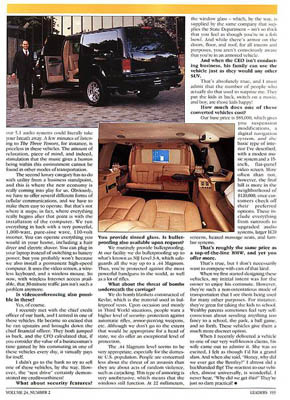


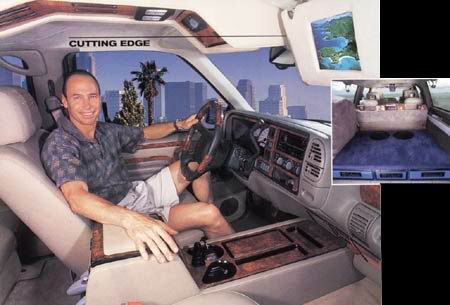
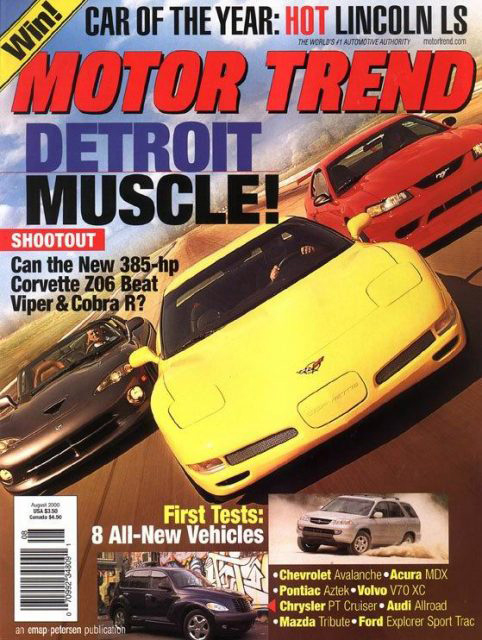
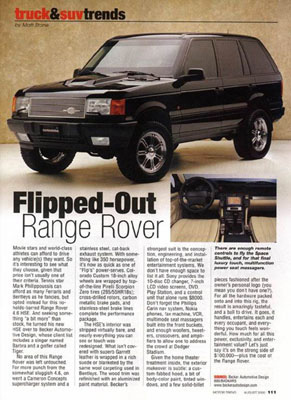
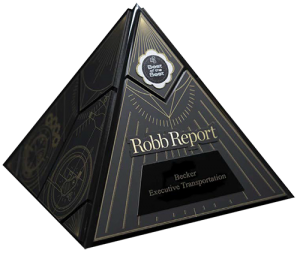 Becker Automotive Design has been awarded Robb Report’s prestigious Best of the Best for 20 years.
Becker Automotive Design has been awarded Robb Report’s prestigious Best of the Best for 20 years.